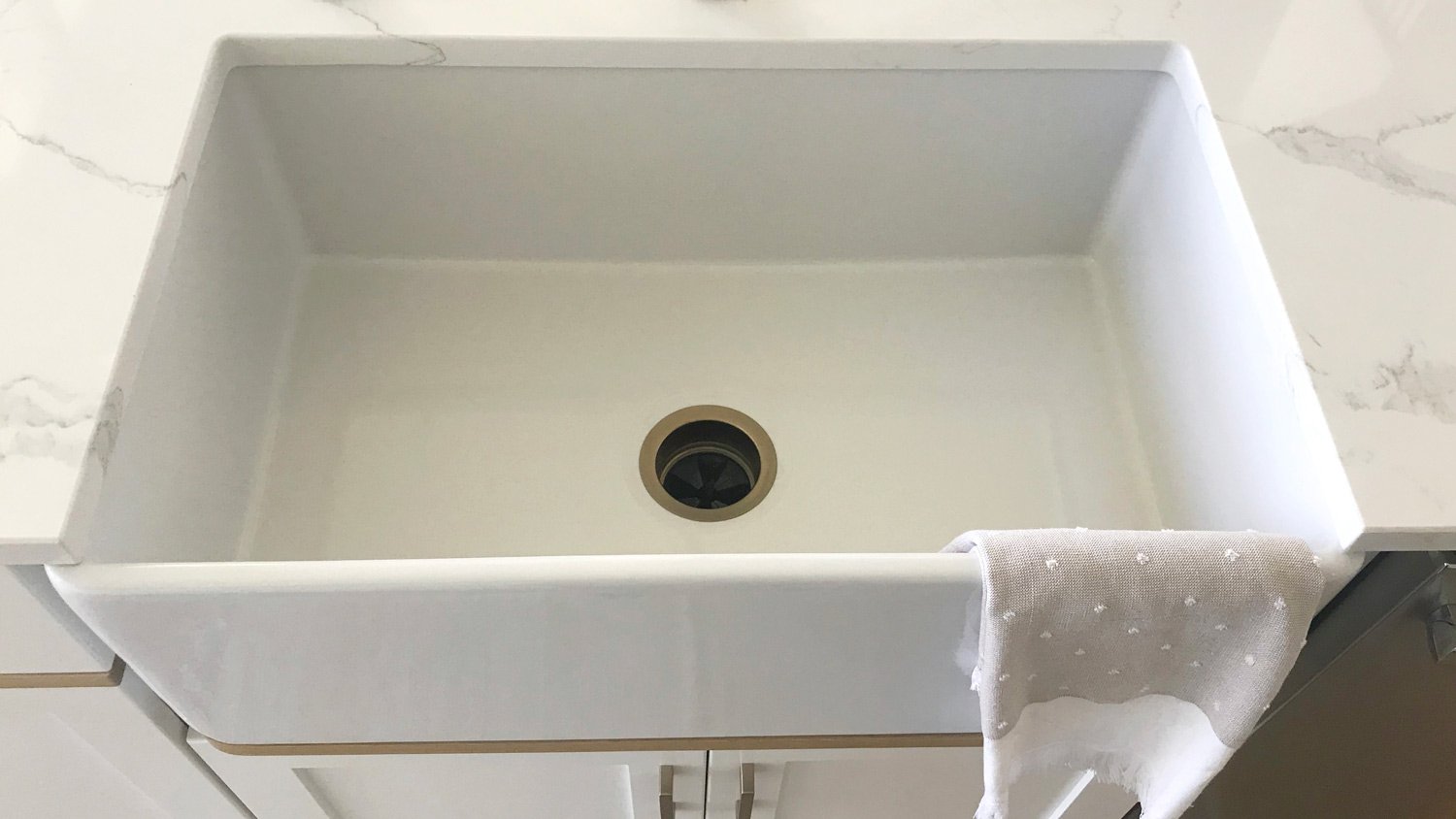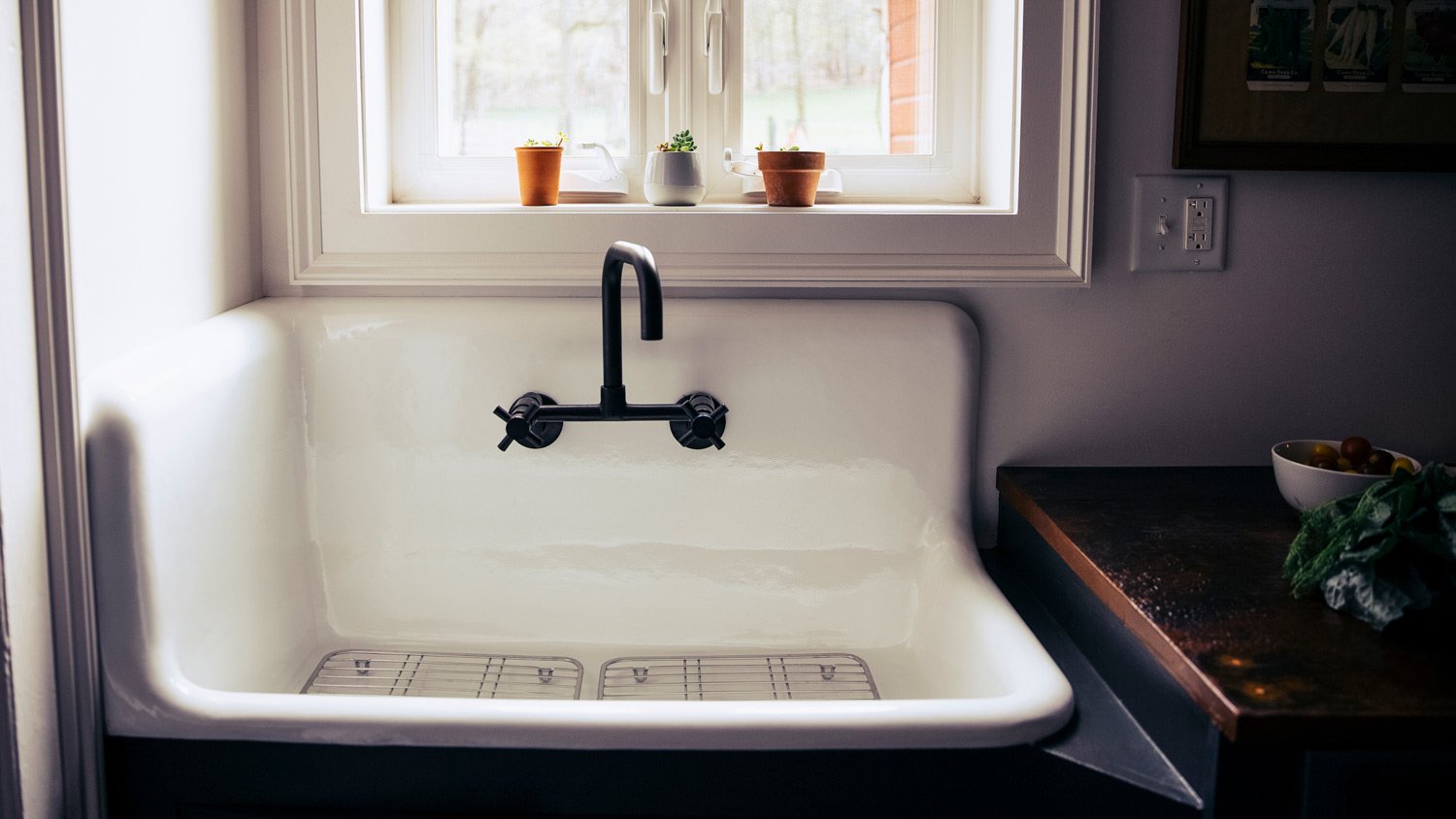
A bump-out addition is right for you if you want to add extra space to your home without adding a new room. Learn about the different bump-out addition costs.
Get the scoop on the pros and cons of these two popular sink options


Fireclay and cast iron sinks look alike but are made of very different materials.
Fireclay performs similarly to cast iron sinks at just a fraction of the price.
Cast iron sinks are long-lasting and easily patched to repair chipped enamel.
When you’re planning a kitchen renovation, whether small or big, it’s not uncommon to get stuck on which type of sink to pick. For instance, you may not know how to choose between fireclay and cast iron options because of how similar they appear at first glance, but there’s actually a lot that sets the two apart. Explore everything you need to know about fireclay vs. cast iron sinks, including all the pros and cons of each and how to pick one that best meets your needs.
The biggest difference between fireclay and cast iron sinks is their materials. As their names suggest, fireclay sinks are made from a base of clay and cast iron from an iron base. Fireclay sinks are coated and fired with a ceramic glaze, while cast iron is coated in porcelain enamel.
Their difference in materials results in a wide variety in color options between the two types of sinks. With fireclay sinks, you’re locked into a white or off-white shade, whereas cast iron sinks can be just about any hue from the rainbow.
Also, each sink option is heavier than alternatives like stainless steel and porcelain, but cast iron more so than fireclay. Cast iron will need support from underneath to prevent it from caving in, while that might not always be the case for fireclay.

Fireclay sinks are molded from a clay base and left to cure for several days, after which they’re coated with a ceramic glaze and fired at temperatures of 1,600 degrees Fahrenheit or higher in a kiln. This heating process both adheres the glaze to the clay and strengthens the base by drying it out and fortifying it further.
| Pros | Cons |
|---|---|
| Less heavy than alternatives | Susceptible to staining |
| Easy customization | May crack over time |
| Low-lift maintenance | Limited color choices |
Best for:
Those looking for a classic, white, porcelain-style sink that’s way more durable.
Those looking for a less expensive, similarly performing alternative to cast iron sinks.
There are a few pros and cons of a fireclay sink, but for now, let’s focus on the benefits—like durability and affordability.
Less heavy than cast iron: While still heavier than sink options like stainless steel, not all fireclay sinks will require additional reinforcement. However, don’t attempt to install a sink like this solo because of the risks involved in such heavy lifting.
Easy customization: Because fireclay sinks are molded rather than carved, you can order them in a number of different shapes and sizes—including single and double sink options.
Simple care: Maintaining the appearance of a fireclay sink is easy to do, provided you avoid scrubbing it with abrasive materials, which can result in scratching. However, thanks to the natural non-stick properties of its ceramic coating, it’s rare that you’ll need heavy-duty scrubbing for cleaning.
Lower cost than cast iron: The cost of a fireclay sink ranges from $270 to $800 on average for the sink alone, whereas cast iron sinks range from $700 to $1,500, with some options costing as much as $5,000.
Despite fireclay being among the best kitchen sink materials, there are still a few drawbacks to consider.
More likely to stain than cast iron: The ceramic coating on fireclay sinks is more porous than the porcelain enamel used on cast iron sinks and is more likely to stain as a result.
Susceptible to cracking: The high temps used to fortify a fireclay sink also make it more likely to crack from brute force or extreme temperature fluctuations. That means you’ll need to avoid placing extremely hot or heavy objects into such a sink to keep it intact.
Fewer color choices: Ceramic glaze isn’t as amenable to different hues as porcelain enamel coating, so you’ll most often find fireclay sinks in white.

Cast iron sinks are made from a base of melted iron cast into a mold, left to solidify, and then fired with a porcelain enamel coating. Cast iron is a kitchen favorite because it’s basically indestructible, and even extensive chipping or cracking can easily be patched by DIYers and professionals alike.
| Pros | Cons |
|---|---|
| Stain-resistant | May chip over time |
| Durable | Heavy |
| Lots of color options | More expensive than similar alternatives |
Best for:
Homeowners who never want to buy another sink again.
Those with a higher kitchen renovation budget.
There are a handful of benefits to owning a cast iron sink, including that it will just about never stain, and can last for a lifetime with proper care.
Stain resistant: Porcelain enamel coating is far less porous than the ceramic glaze used on fireclay sinks and won’t stain.
Durable: Though the enamel may crack over time, the cast iron base never will.
Extensive color choices: The enamel coating on cast iron products can be tinted to just about any hue you desire.
Cast iron sinks have a lot going for them, but that doesn’t mean they’re without cons—one of the biggest being their high price point.
More expensive than fireclay: Cast iron sink prices start where fireclay sinks max out: at roughly $600, and that’s just for smaller options. Larger kitchen sink sizes from this material can cost anywhere from $1,900 to $5,000.
Extremely heavy: Cast iron sinks are so heavy that it’s not advised to attempt installation on your own. In that same vein, they almost always need additional underneath support to keep them in place.
May chip over time: While the iron base of a cast iron sink won’t falter, the enamel coating can crack and chip after extended use. Fortunately, this is an easy fix that homeowners can do themselves, but the base may rust if the coating isn’t patched quickly.
Now that you know the difference between these two sink options, here’s how they stack up against each other in various categories.
While both fireclay and cast iron can be molded into different shapes and sizes, and have an appealing glossy coating, cast iron takes the win because of how resistant it is to staining.
Again, cast iron dominates this category due to the sheer number of color choices it offers.
Fireclay sinks can last for years, but only cast iron can last a lifetime. Irreparable cracks or splitting are likely to occur in the former, whereas chipping enamel is the worst that can happen to a cast iron sink.
Fireclay may not last as long as cast iron, but it may be the better option because it costs only a fraction of what you’ll pay for its competitor.
While fireclay sinks are heavier than stainless steel or porcelain sinks, they do weigh less than cast iron, which means that it’s possible to install them on your own and will require less materials (or underneath supports) to do so.
Repairing a cracked fireclay sink can be a costly endeavor, and in most cases you’ll be better off simply replacing it altogether. On the flipside, a chipped cast iron sink can be successfully patched in a matter of hours and at little to no extra cost.
Both options need to be handled with care to avoid scratching or chipping. That means washing them with only soft materials like sponges rather than scrub brushes, and not throwing heavy or boiling materials into them.
Alvaro waas able to schedule my countertop installation on very short notice. They did a good job installing the Corian countertop and had to carry the 12 foot long pieces of coring from my barn to the kitchen. they kept me up on the work they were doing and were very pleasant and helpful.
Chris, Steve and their crew are thorough and professional. They are meticulous and follow instructions diligently. They treat the client and their staff with courtesy and respect. The crew is safety conscious and the Ecomaids products are both effective and ecologically safe. I highly...
Professional and pront service, their suggestions and ideas help me to chose the best materials for my bathroom, the renovation works were competed on time, highly recommended.
From average costs to expert advice, get all the answers you need to get your job done.

A bump-out addition is right for you if you want to add extra space to your home without adding a new room. Learn about the different bump-out addition costs.

Tiling a shower is an investment in the look and function of your home. This guide explains the factors behind the cost to tile a shower.

If your bathroom needs sprucing up, a new vanity will make a big difference. Vanity installation costs depend on the size and type of the countertops and fixtures you choose.

An updated bathtub can give a bathroom a whole new look. Find out how much it costs to replace a bathtub in Los Angeles, CA, including prices by type and labor costs.

Adding kitchen cabinets to your ceiling is a budget-friendly way to increase your storage space and make your kitchen look more attractive.

An updated bathtub can give a bathroom a whole new look. Find out how much it costs to replace a bathtub in Dallas, TX, including prices by type and labor costs.